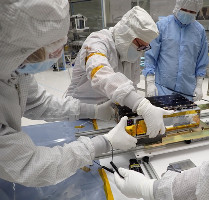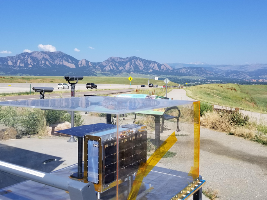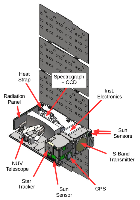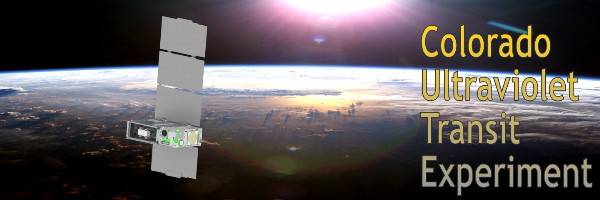| Satellite name | CUTE (Colorado Ultraviolet Transit Experiment, CUTE-LASP) |
|---|---|
| Spacecraft type | CubeSat |
| Units or mass | 6U |
| Status | Operational (Twitter post on 2022-09-25 and SmallSat 2022 paper as of 2022-12-24. SmallSat 2023 presentation SpaceNews article 2023-12-12. SmallSat 2024 presentation.) |
| Launched | 2021-09-27 |
| NORAD ID | 49263 |
| Deployer | CSD (Canisterized Satellite Dispenser) [Planetary Systems Corporation] |
| Launcher | Atlas V (ELaNa 34) |
| Organization | University of Colorado Boulder |
| Institution | University |
| Entity | Academic / Education |
| Headquarters | US |
| Launch brokerer | Parsons, Adaptive Launch Solutions |
| Partners | NASA |
| Costs | The budget for developing, assembling and operating CUTE through the summer of 2024 is about $5.5 million. |
| Oneliner |
Characterize the composition and mass-loss rates of exoplanet atmospheres. |
| Description |
Use near-ultraviolet (NUV) transmission spectroscopy from 255 to 330 nanometers (nm) to characterize the composition and mass-loss rates of exoplanet atmospheres. CUTE measures how the NUV light from the host star is changed as the exoplanet transits in front of the star and passes through the planet’s atmospheres. CUTE’s spectrally resolved lightcurve will provide constraints on the composition and escape rates of these atmospheres, and may provide the first concrete evidence for magnetic fields on extrasolar planets. The mission goal is to train and educate students while conducting scientific research. This mission is similar to the CSSWE, MinXSS‐1, MinXSS‐2 and CSIM, which have gathered over 100 MB of data from amateur operators and were coordinated by the IARU. As has been the case in the past, we will be actively soliciting the telemetry from amateurs. The information provided by amateurs has been crucial for past missions, enabling us to detect instrument orbits and the Doppler‐shifted communication frequencies and troubleshoot anomalies. It is common for all of our missions to have extensive student involvement during the design, building, testing, and operation of the instrument. |
| Results | |
| Failure cause | Some decrease in sensitivity of optics. |
| Sources | [1] [2] [3] [4] [5] [6] [7] |
| Photo sources | [1] [2] [3] [4] |
| COTS subsystems |
|
| On the same launch |
Last modified: 2024-08-28





